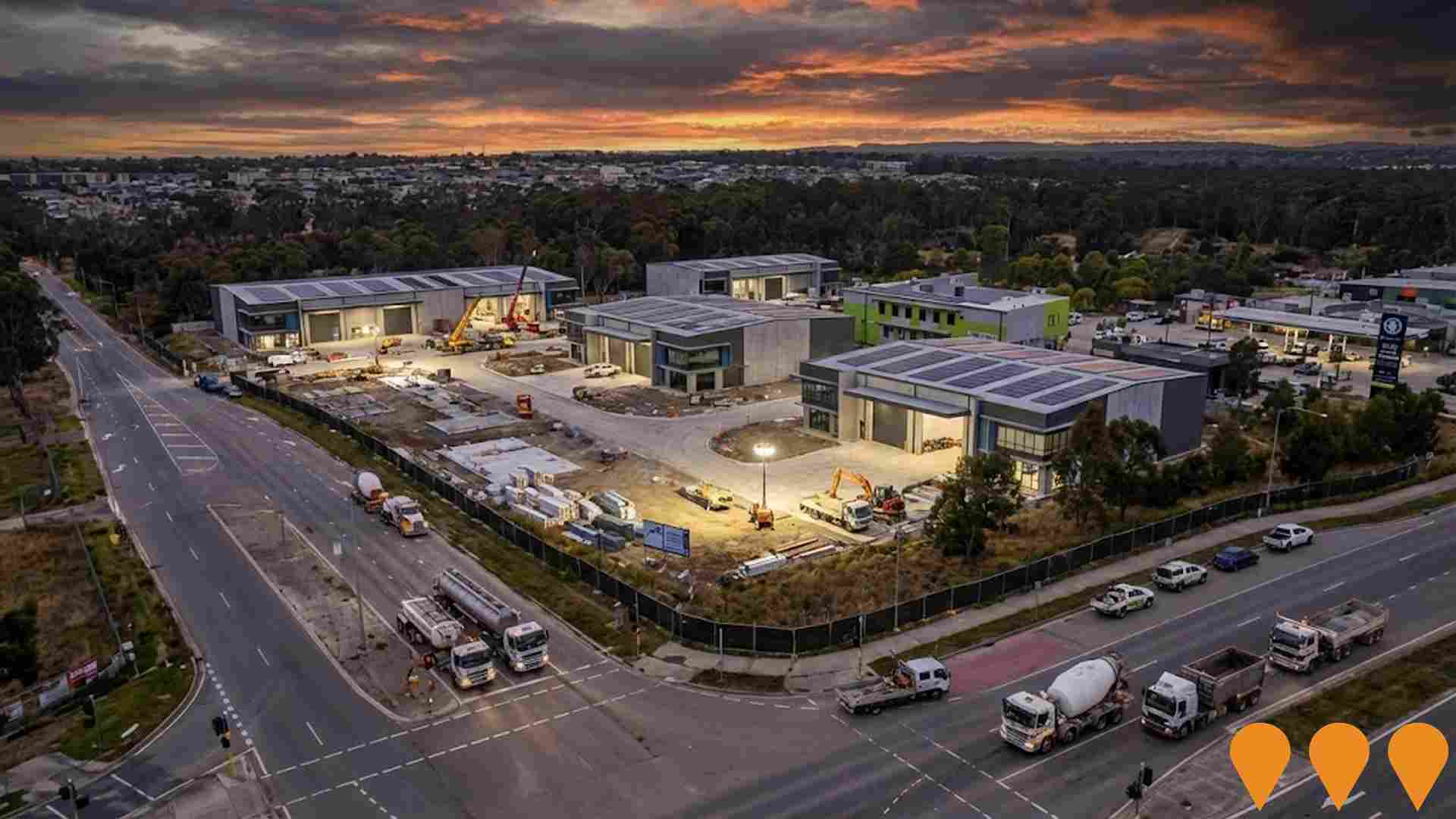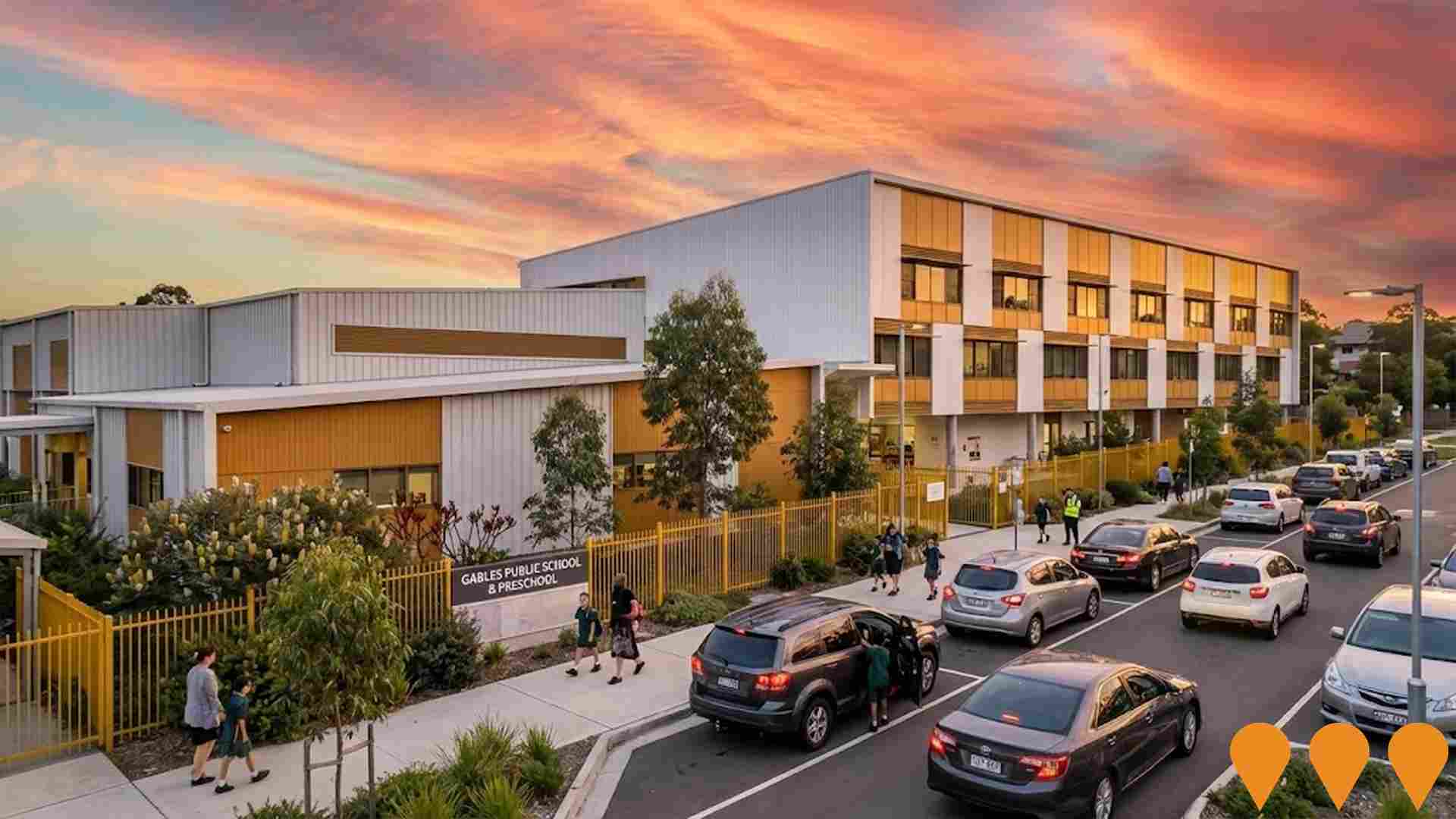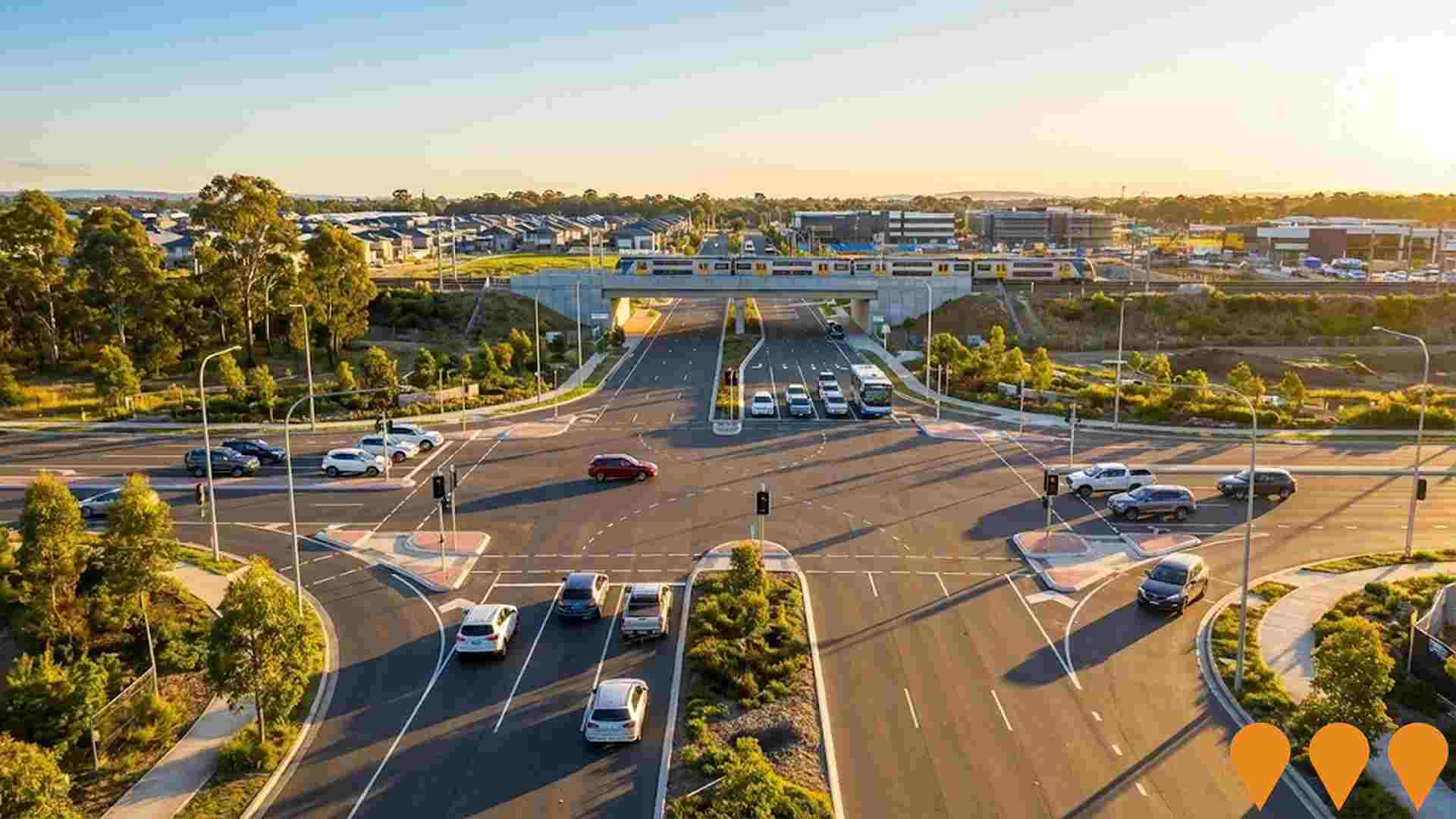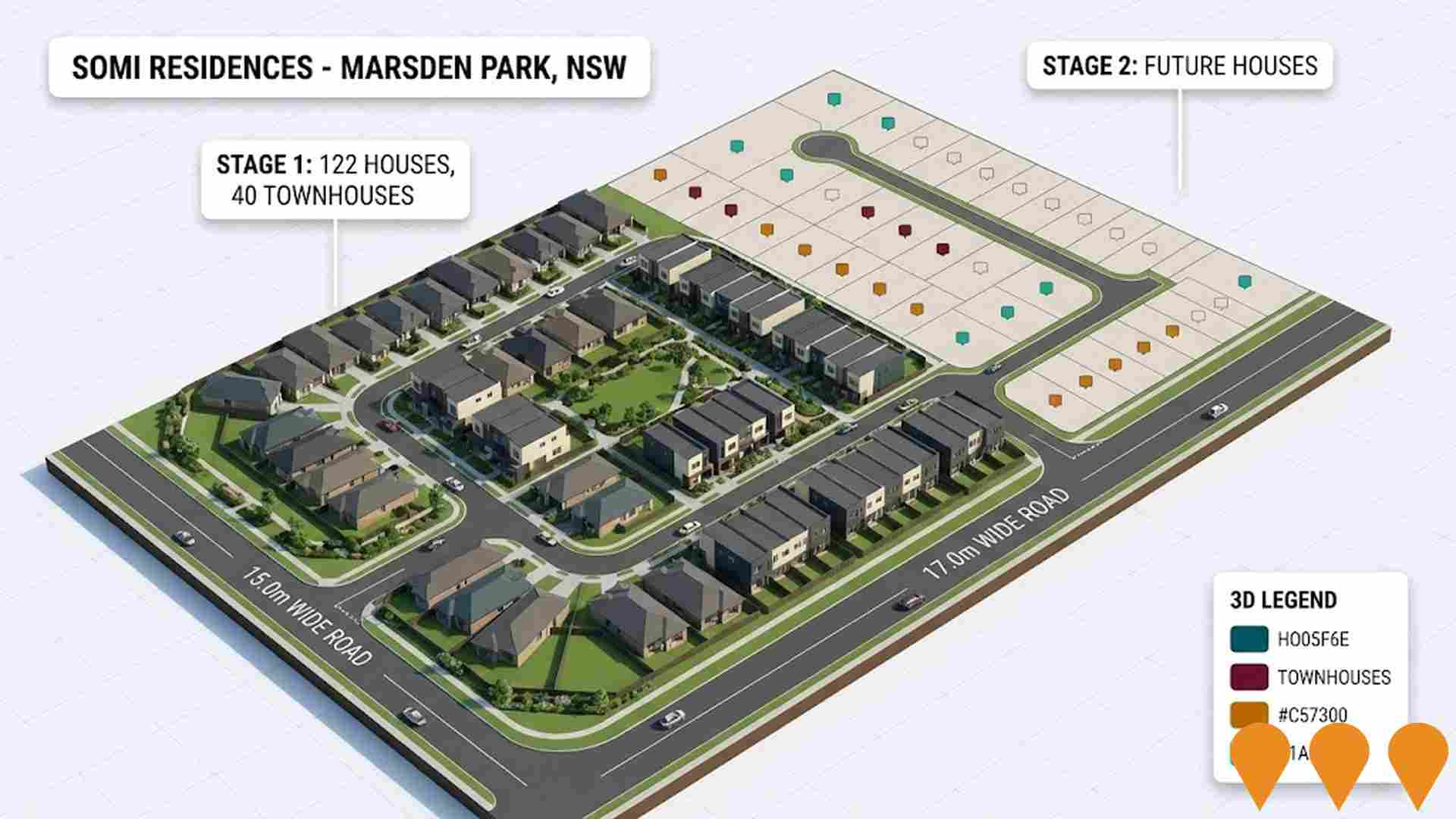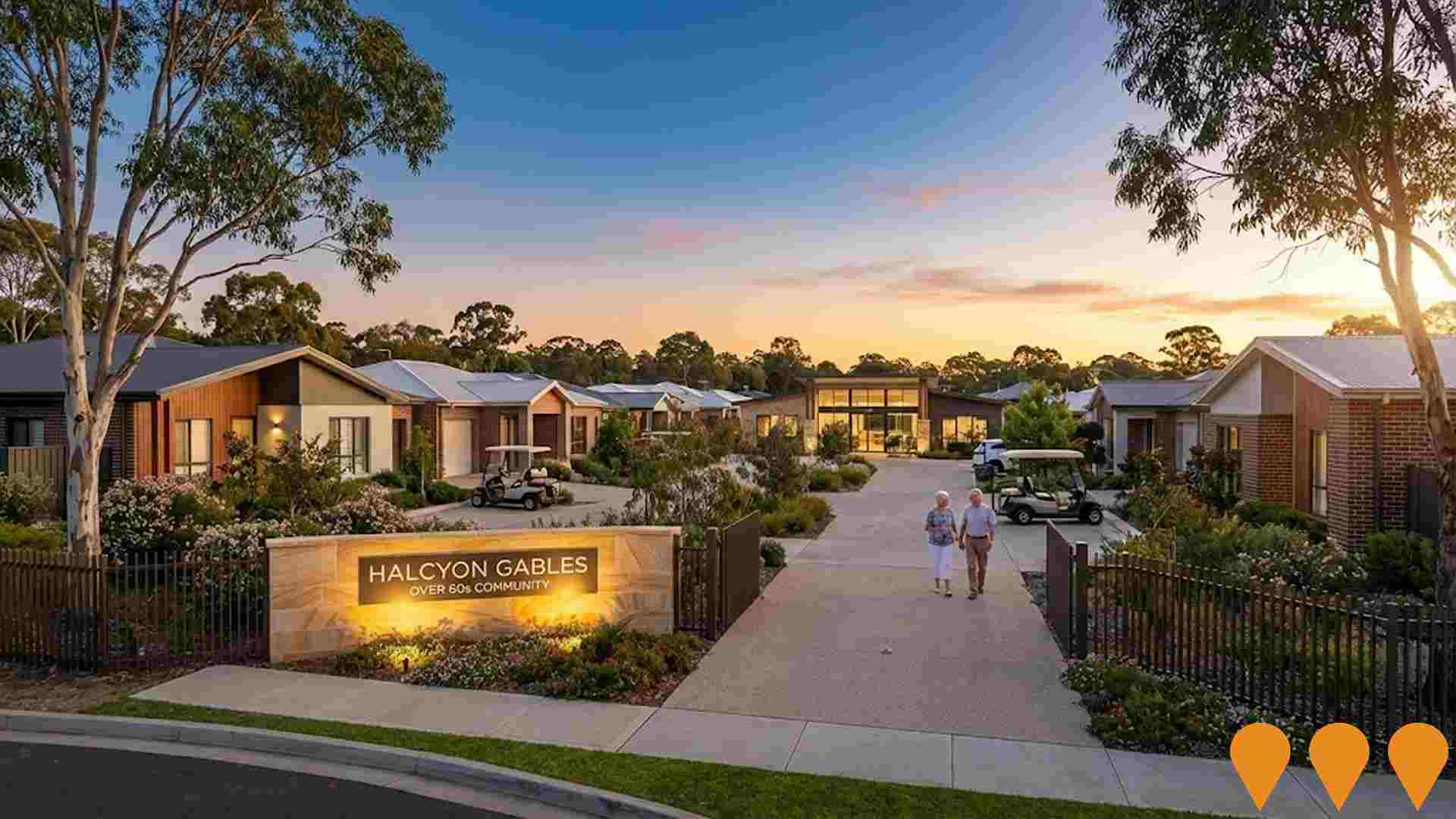Chart Color Schemes
est. as @ -- *
ABS ERP | -- people | --
2021 Census | -- people
Sales Activity
Curious about local property values? Filter the chart to assess the volume and appreciation (including resales) trends and regional comparisons, or scroll to the map below view this information at an individual property level.
Find a Recent Sale
Sales Detail
Population
Marsden Park - Shanes Park lies within the top 10% of areas nationally in terms of population growth performance according to AreaSearch analysis of short and medium-term trends
Marsden Park-Shanes Park's population, as of November 2025, is approximately 30,159. This figure represents a significant increase from the 2021 Census, which recorded a population of 15,524. The growth of 14,635 people (94.3%) is inferred from ABS estimates and validated new addresses since June 2024. The population density stands at 1,204 persons per square kilometer, above the national average. The area's growth rate exceeded both state and metropolitan averages, driven primarily by interstate migration (84.8%). AreaSearch uses ABS/Geoscience Australia projections for each SA2 area, released in 2024 with a base year of 2022, and NSW State Government projections for areas not covered, released in 2022 with a base year of 2021.
Growth rates by age group are applied until 2041. Based on these projections, the area is expected to grow exceptionally, reaching a population of 60,611 by 2041, an increase of 91.4% over 17 years.
Frequently Asked Questions - Population
Development
The level of residential development activity in Marsden Park - Shanes Park was found to be higher than 90% of real estate markets across the country
Marsden Park - Shanes Park has seen approximately 968 dwelling approvals annually. Over the past five financial years, from FY21 to FY25, around 4,842 homes have been approved, with an additional 197 approved in FY26 so far. This results in about 4.3 new residents arriving per year for each dwelling constructed over these five years, indicating high demand outstripping supply.
Consequently, this typically leads to price growth and increased buyer competition. The average construction cost of new properties is $278,000, which is below regional levels, offering more affordable housing options. In FY26, commercial approvals totaling $4.0 million have been registered, reflecting the area's predominantly residential nature. Compared to Greater Sydney, Marsden Park - Shanes Park exhibits 283.0% higher construction activity per capita, providing buyers with greater choice and demonstrating strong developer confidence in the location. New developments consist of 80.0% detached houses and 20.0% medium to high-density housing, maintaining the area's traditional suburban character focused on family homes. This shift from the current 98.0% house dominance reflects reduced development site availability and evolving lifestyle demands and affordability needs.
With around 45 people per dwelling approval, Marsden Park - Shanes Park exhibits growth area characteristics. By 2041, the area is projected to grow by approximately 27,556 residents. Assuming current development patterns continue, new housing supply should meet demand, creating favorable conditions for buyers and potentially facilitating population growth beyond current projections.
Frequently Asked Questions - Development
Infrastructure
Marsden Park - Shanes Park has very high levels of nearby infrastructure activity, ranking in the top 20% nationally
Changes to local infrastructure significantly impact an area's performance. AreaSearch has identified 37 projects likely to affect the region. Notable ones include Somi Residences, Vertex Industrial Estate, Stockland The Gables Masterplanned Community, and CDC Data Centre Campus Marsden Park. Below is a list of those most relevant.
Professional plan users can use the search below to filter and access additional projects.
INFRASTRUCTURE SEARCH
 Denotes AI-based impression for illustrative purposes only, not to be taken as definitive under any circumstances. Please follow links and conduct other investigations from the project's source for actual imagery. Developers and project owners wishing us to use original imagery please Contact Us and we will do so.
Denotes AI-based impression for illustrative purposes only, not to be taken as definitive under any circumstances. Please follow links and conduct other investigations from the project's source for actual imagery. Developers and project owners wishing us to use original imagery please Contact Us and we will do so.
Frequently Asked Questions - Infrastructure
CDC Data Centre Campus Marsden Park
Largest data centre campus in Southern Hemisphere. 504 megawatt ICT capacity across six four-storey buildings with 24 data halls each. Construction began October 2024.
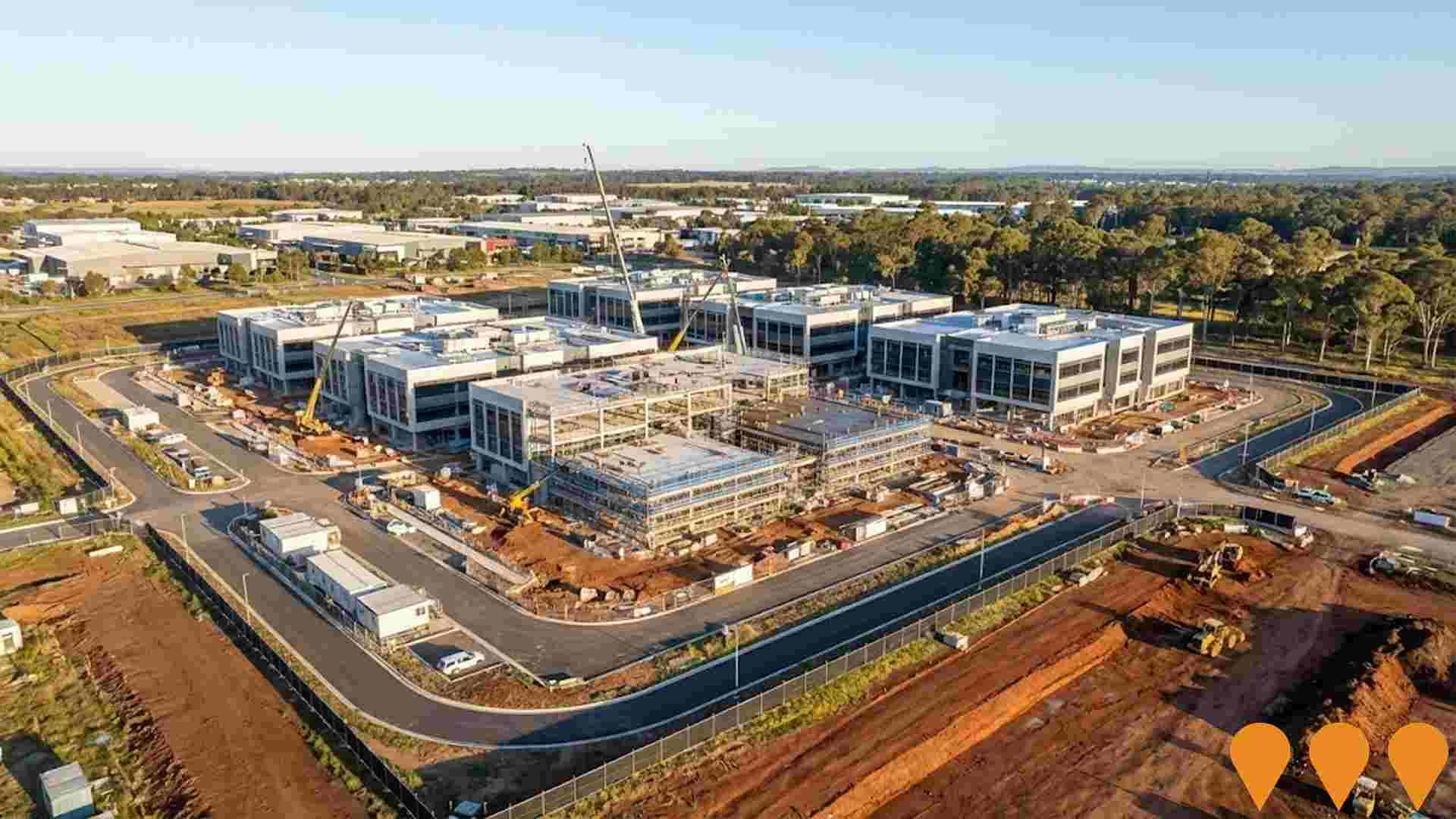
Stockland The Gables Masterplanned Community
The Gables is a 293-hectare masterplanned community in Sydney's Hills District, formerly known as Box Hill, which Stockland acquired for $415 million in 2020 to develop 1,900 additional homes. The total development, which began in 2015, is expected to include a total of about 4,100 to 4,500 homes and a population of around 13,000 residents upon completion. The community features 75 hectares of green space, a future 4-hectare lake, a K-12 school, a public primary school and preschool set to open in 2027, and a new town centre. The Stockland Gables Town Centre opened in October 2025 and is anchored by a Woolworths supermarket, with other tenants including a childcare centre, medical facility, and various specialty shops and dining options. Construction is also underway on Stockland Halcyon Gables, a land lease community for over-60s within the estate.
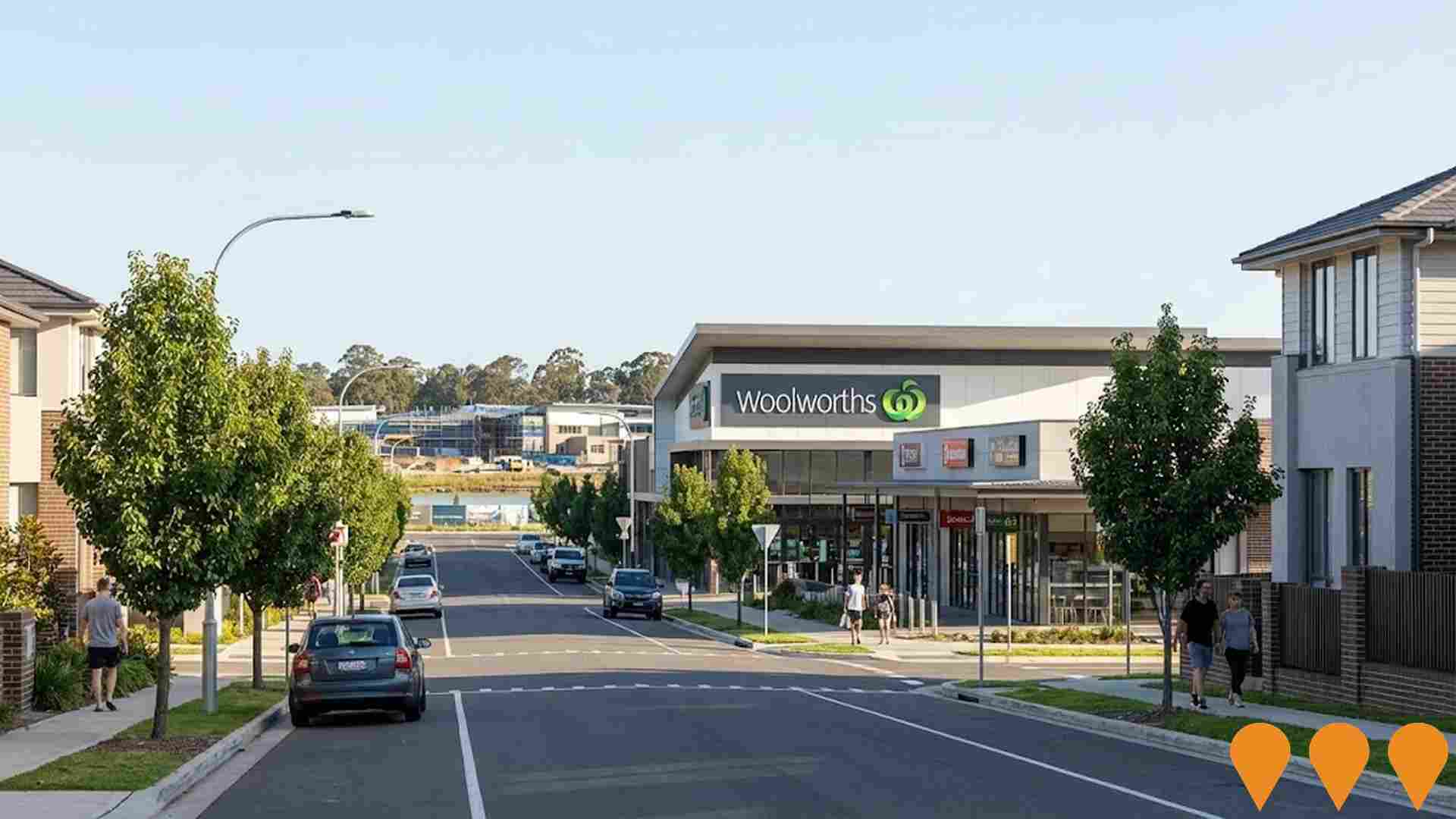
Marsden Park and Melonba Schools Development
Seven-building educational development in Marsden Park with Marsden Park High School and Melonba Primary School. Features include three-storey buildings, outdoor learning areas, gym, hall, theater, canteen, sports fields, and open space. New permanent high school with 97 classrooms for up to 2,000 students and primary school with 44 classrooms for up to 1,000 students.
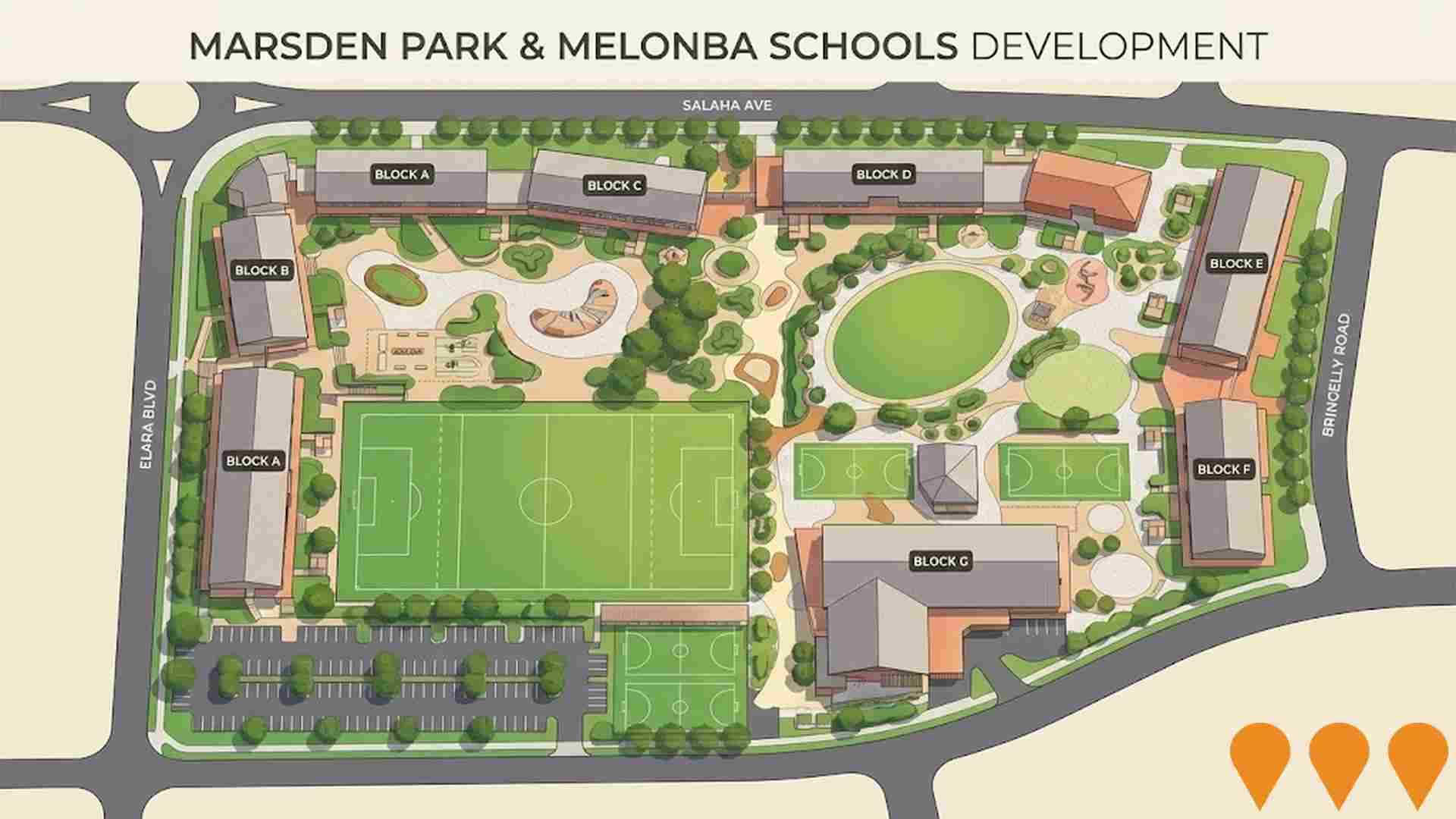
Stockland Gables Town Centre
A fully leased, $95 million neighbourhood shopping centre with a gross lettable area of 9,400 square metres, anchored by a full-line Woolworths. It features 30 retailers, including a childcare centre (Nido Early School), medical centre, pharmacy, gym, specialty shops, and dining options. The centre is targeting a 5-star Green Star rating and includes a 500 kWp solar installation with battery storage. It is located in the heart of The Gables masterplanned community.
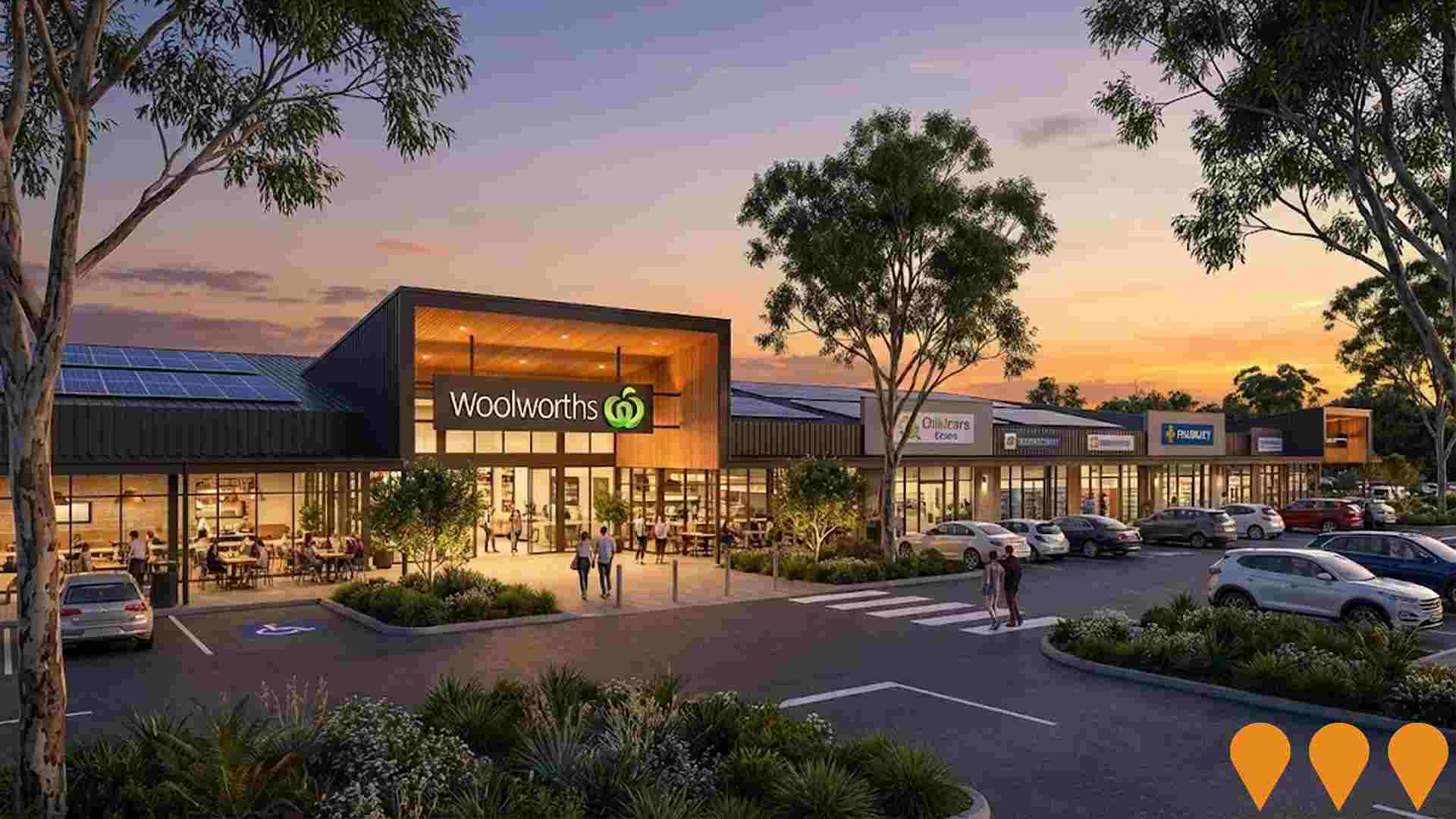
Stockland The Gables Masterplanned Community
Large scale masterplanned community in the Hills Shire delivering around 4,100 homes across more than 300 hectares, with a mix of lot sizes, parks, walkways and a central lake. The project was initiated by Celestino and is now being delivered by Stockland, with multiple neighbourhoods, a K 12 Catholic school and significant open space. A new Stockland Gables town centre anchored by a full line Woolworths supermarket and about 30 specialty retailers opened in 2025, alongside medical, childcare and dining offers. Residential construction, community facilities and the Halcyon Gables land lease community are progressing, with overall estate build out expected to run through the second half of the 2020s.

M12 Motorway (Western Sydney Airport Motorway)
A $2.04 billion, 16-kilometre east-west motorway providing direct access to Western Sydney International Airport. Four-lane toll-free motorway with provision for future expansion to six lanes. Includes multiple interchanges and bridges across major waterways, supporting 2,000+ jobs during construction and opening in 2026 to serve the new airport.

The Gables Town Centre
Mixed-use town centre development with 7,170 square metres of floor space including Woolworths supermarket, function centre, commercial tenancies, medical facility (1,800sqm), childcare centre (700sqm), and food and drink premises (2,000sqm). Features basement parking for 351 cars. Capital investment value of $63.3 million approved by Sydney Central City Planning Panel.
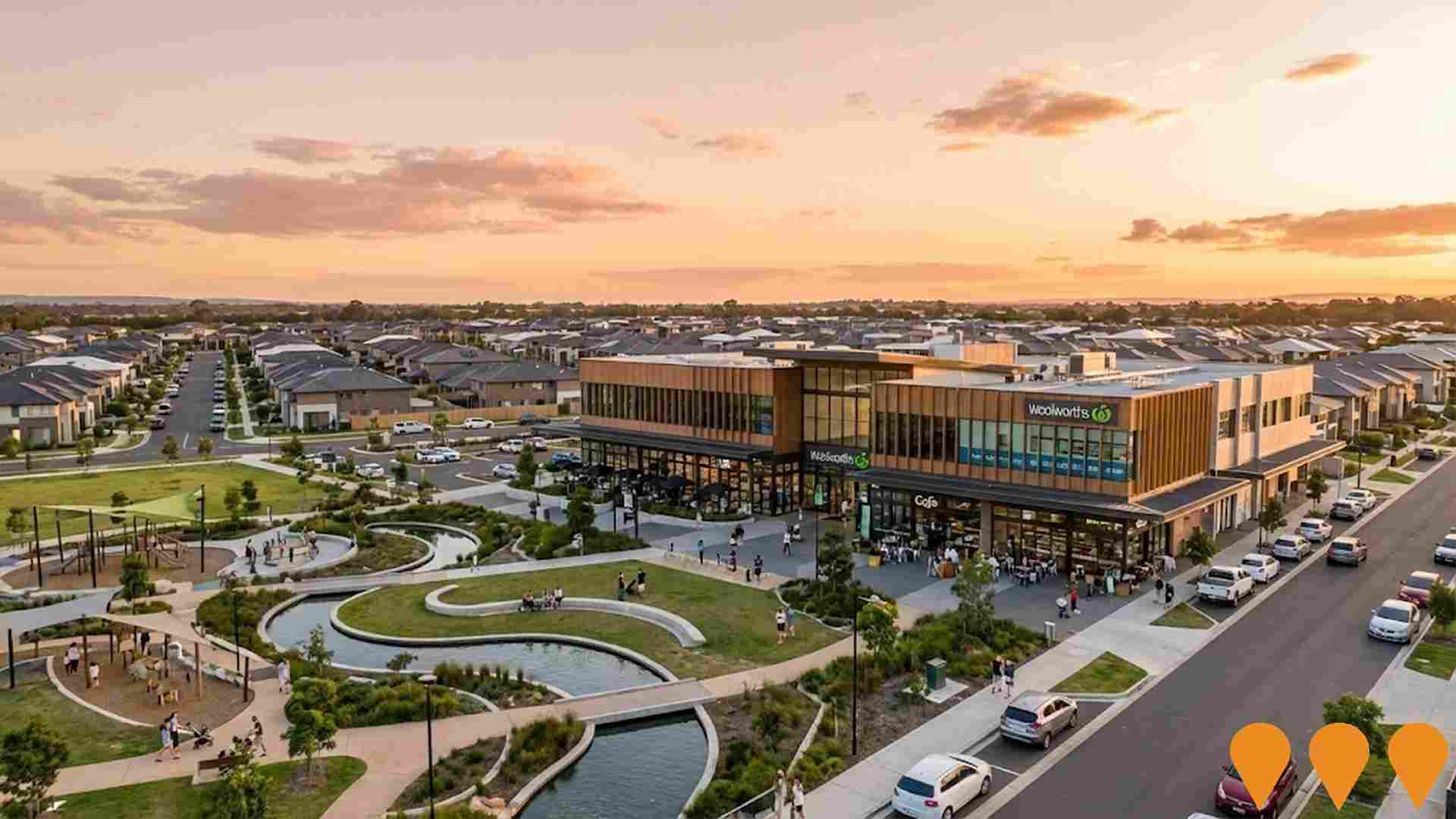
Elara Place (New Neighbourhood)
New neighbourhood within Elara community bringing 800 additional homes, land lots ranging from 250-570m2. Located on Glengarrie Road and South Street.
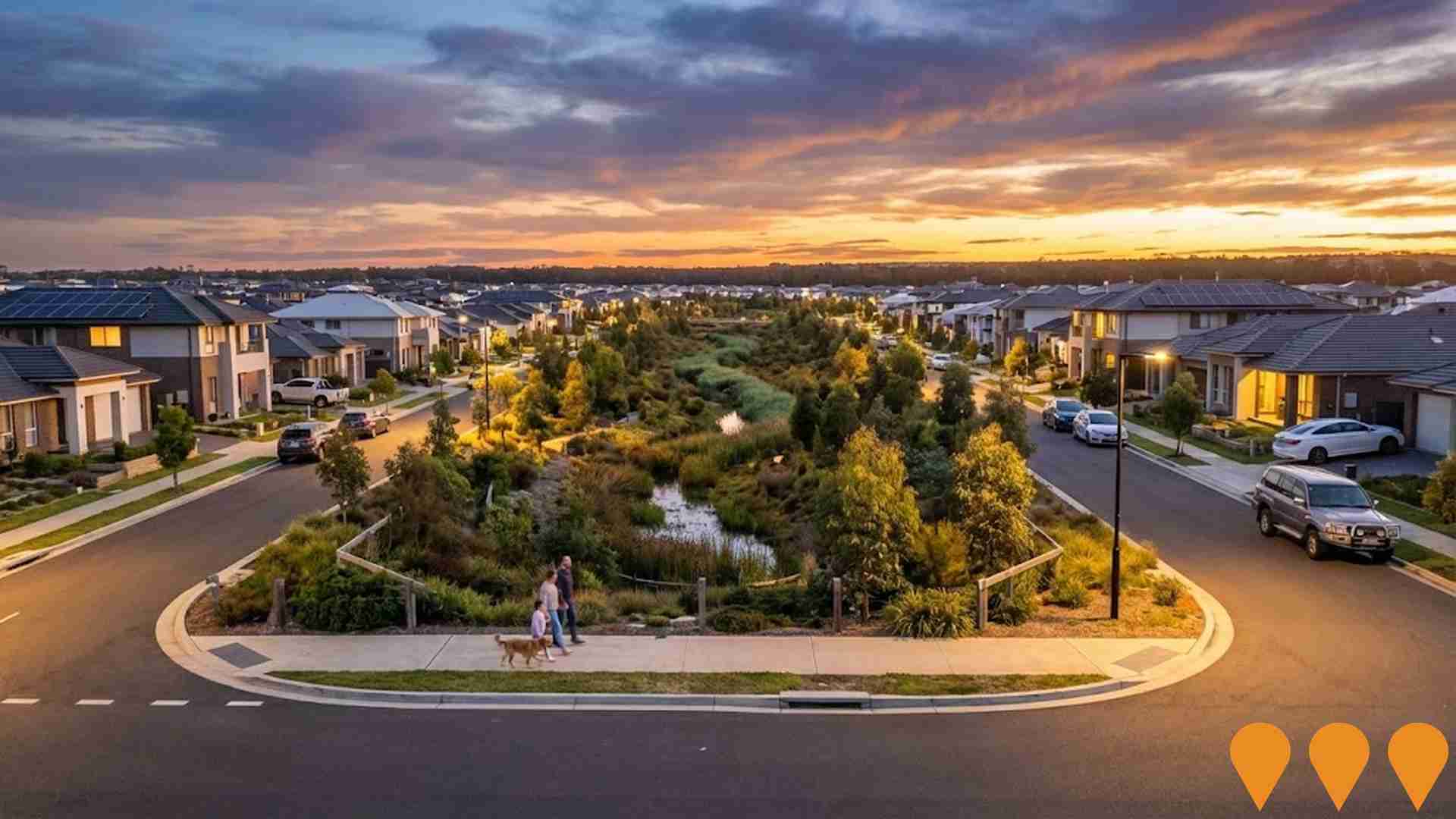
Employment
The exceptional employment performance in Marsden Park - Shanes Park places it among Australia's strongest labour markets
Marsden Park - Shanes Park has a highly educated workforce with professional services well represented. The unemployment rate in June 2025 was 1.9%.
Employment growth over the past year was estimated at 6.2%. As of June 2025, 14,877 residents were employed, with an unemployment rate of 2.3%, below Greater Sydney's rate of 4.2%. Workforce participation was 72.4%, higher than Greater Sydney's 60.0%. Employment is concentrated in health care & social assistance, professional & technical services, and retail trade.
The area has a notable concentration in transport, postal & warehousing, with employment levels at 1.7 times the regional average. However, accommodation & food employs only 3.3% of local workers, below Greater Sydney's 5.8%. Limited local employment opportunities are indicated by the Census working population vs resident population count. Between June 2024 and June 2025, employment levels increased by 6.2%, labour force by 6.5%, resulting in an unemployment rise of 0.3 percentage points. In contrast, Greater Sydney experienced employment growth of 2.6% and labour force growth of 2.9%, with a 0.3 percentage point rise in unemployment. Jobs and Skills Australia's national employment forecasts from May 2025 project national employment growth of 6.6% over five years and 13.7% over ten years, but growth rates vary significantly between industry sectors. Applying these projections to Marsden Park - Shanes Park's employment mix suggests local growth of approximately 7.0% over five years and 14.3% over ten years.
Frequently Asked Questions - Employment
Income
The economic profile demonstrates exceptional strength, placing the area among the top 10% nationally based on comprehensive AreaSearch income analysis
Marsden Park - Shanes Park has one of Australia's highest incomes according to AreaSearch's aggregation of latest ATO data for FY2022. Its median taxpayer income was $65,657 and average income was $77,317, compared to Greater Sydney's $56,994 and $80,856 respectively. By September 2025, estimates suggest median income would be approximately $73,936 and average income $87,067, adjusted for Wage Price Index growth of 12.61%. The 2021 Census shows household, family, and personal incomes in Marsden Park - Shanes Park rank between the 88th and 94th percentiles nationally. Income distribution reveals that 38.4% of residents (11,581 people) fall within the $1,500-$2,999 bracket, similar to regional levels at 30.9%. High weekly earnings exceeding $3,000 are achieved by 42.4% of households, indicating strong consumer spending. Despite high housing costs consuming 21.1% of income, disposable income remains at the 91st percentile. The area's SEIFA income ranking places it in the 10th decile.
Frequently Asked Questions - Income
Housing
Marsden Park - Shanes Park is characterized by a predominantly suburban housing profile, with ownership patterns similar to the broader region
Dwelling structure in Marsden Park - Shanes Park, as per the latest Census, consisted of 97.6% houses and 2.4% other dwellings (semi-detached, apartments, 'other' dwellings). This compared to Sydney metro's 84.9% houses and 15.1% other dwellings. Home ownership in Marsden Park - Shanes Park stood at 10.5%, with the rest being mortgaged (70.1%) or rented (19.4%). The median monthly mortgage repayment was $2,882, above Sydney metro's average of $2,700. Median weekly rent was $570, compared to Sydney metro's $540. Nationally, Marsden Park - Shanes Park's mortgage repayments were significantly higher than the Australian average of $1,863, and rents substantially above the national figure of $375.
Frequently Asked Questions - Housing
Household Composition
Marsden Park - Shanes Park features high concentrations of family households, with a higher-than-average median household size
Family households constitute 89.9% of all households, including 64.2% couples with children, 18.5% couples without children, and 6.3% single parent families. Non-family households comprise the remaining 10.1%, with lone person households at 8.9% and group households making up 1.3%. The median household size is 3.4 people, larger than the Greater Sydney average of 3.3.
Frequently Asked Questions - Households
Local Schools & Education
Marsden Park - Shanes Park shows strong educational performance, ranking in the upper quartile nationally when assessed across multiple qualification and achievement indicators
Educational attainment in Marsden Park-Shanes Park shows a significant advantage with 50.1% of residents aged 15+ holding university qualifications, compared to 30.4% nationally and 32.2% in NSW. Bachelor degrees are the most common at 32.3%, followed by postgraduate qualifications (15.6%) and graduate diplomas (2.2%). Vocational pathways account for 23.9% of qualifications, with advanced diplomas at 10.7% and certificates at 13.2%. Current educational participation is high at 34.3%, including 15.2% in primary education, 6.8% in secondary education, and 5.1% pursuing tertiary education.
The area's five schools have a combined enrollment of 4,105 students as of the latest data. Marsden Park-Shanes Park demonstrates above-average socio-educational conditions with an ICSEA score of 1079. The educational mix includes two primary, two secondary, and one K-12 school.
Frequently Asked Questions - Education
Schools Detail
Nearby Services & Amenities
Transport
Transport servicing is low compared to other areas nationally based on assessment of service frequency, route connectivity and accessibility
Marsden Park - Shanes Park has 74 active public transport stops. These are served by 24 different bus routes, offering a total of 1,321 weekly passenger trips. The area's transport accessibility is rated good, with residents on average 262 meters from the nearest stop.
Service frequency averages 188 trips per day across all routes, equating to about 17 weekly trips per individual stop.
Frequently Asked Questions - Transport
Transport Stops Detail
Health
Marsden Park - Shanes Park's residents boast exceedingly positive health performance metrics with a fairly standard level of common health conditions seen across both young and old age cohorts
Health outcomes data shows excellent results in Marsden Park - Shanes Park, with common health conditions seen across both young and old age groups at a fairly standard level.
Approximately 59% of the total population (17,733 people) have private health cover, a rate found to be exceptionally high. The most prevalent medical conditions are asthma and diabetes, affecting 5.0% and 3.9% of residents respectively. 84.9% of residents declare themselves completely clear of medical ailments, compared to 80.0% across Greater Sydney. The area has 5.4% of residents aged 65 and over (1,628 people), which is lower than the 7.8% in Greater Sydney.
Frequently Asked Questions - Health
Cultural Diversity
Marsden Park - Shanes Park is among the most culturally diverse areas in the country based on AreaSearch assessment of a range of language and cultural background related metrics
Marsden Park-Shanes Park is among the most culturally diverse areas in Australia, with 54.9% of its population born overseas and 61.3% speaking a language other than English at home. The predominant religion in Marsden Park-Shanes Park, as of recent data, is Christianity, comprising 41.8% of the population. However, Hinduism is notably overrepresented, making up 26.7% of the population, which is higher than the Greater Sydney average of 20.2%.
In terms of ancestry, the top three represented groups in Marsden Park-Shanes Park are 'Other', comprising 25.0%, Indian at 21.9% (substantially higher than the regional average of 16.9%), and Filipino at 12.6% (higher than the regional average of 6.2%). There are also notable divergences in the representation of certain other ethnic groups, such as Samoan at 1.0%, Sri Lankan at 0.8%, and Maltese at 1.4%.
Frequently Asked Questions - Diversity
Age
Marsden Park - Shanes Park hosts a very young demographic, ranking in the bottom 10% of areas nationwide
Marsden Park-Shanes Park has a median age of 32 years, which is younger than Greater Sydney's average of 37 and Australia's average of 38. Compared to Greater Sydney, Marsden Park-Shanes Park has a higher percentage of residents aged 35-44 (26.1%), but fewer residents aged 55-64 (4.6%). This 35-44 age group is significantly higher than the national average of 14.2%. Post-2021 Census data shows that the 45 to 54 age group grew from 7.8% to 10.4%, while the 15 to 24 cohort increased from 8.3% to 10.9%. Conversely, the 25 to 34 age group declined from 18.9% to 12.8%, and the 0 to 4 age group dropped from 11.5% to 9.0%. Demographic projections suggest that by 2041, Marsden Park-Shanes Park's age profile will change significantly. The 15 to 24 cohort is projected to grow by 263%, adding 8,617 residents to reach a total of 11,896.
